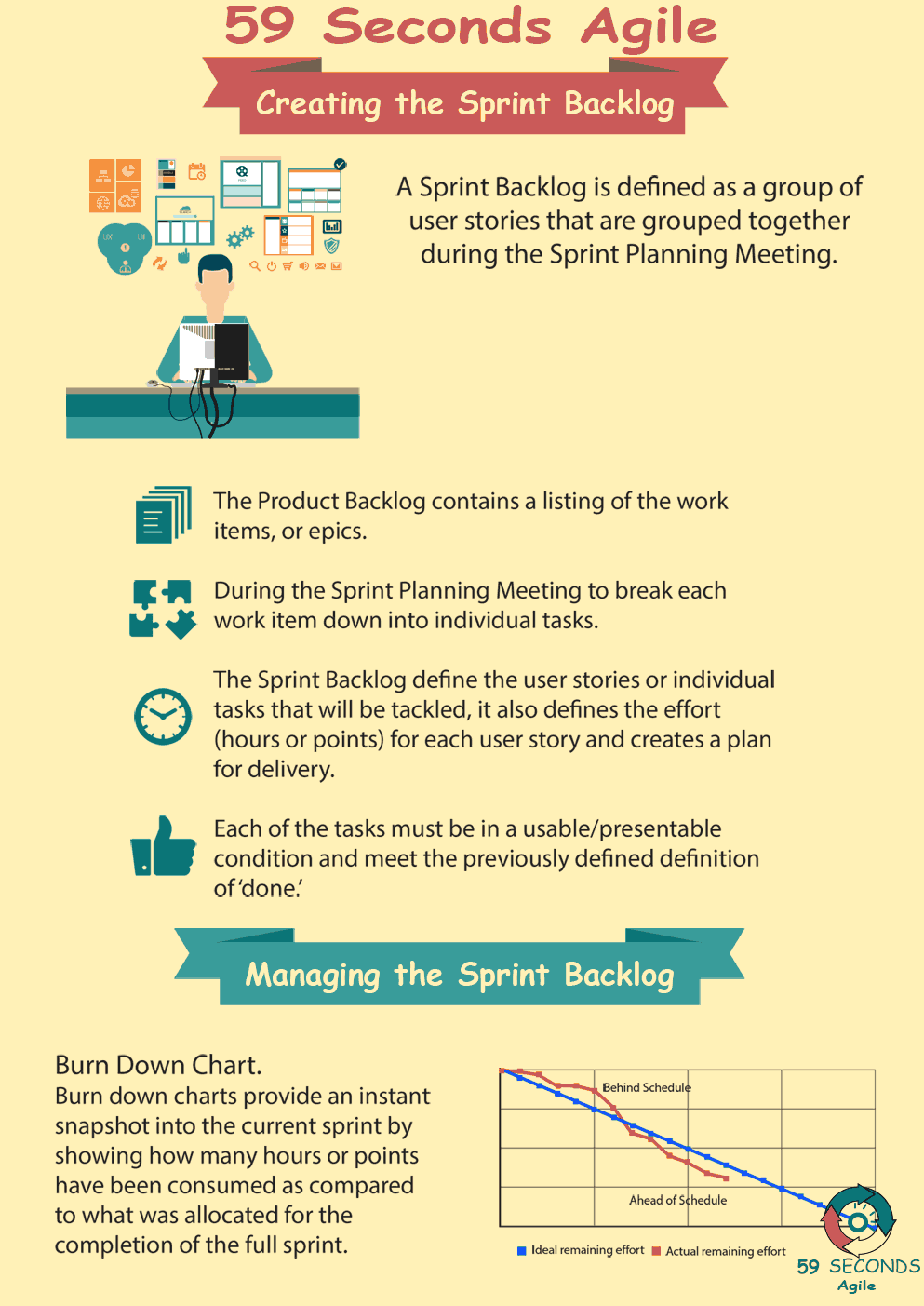Agile Sprint Backlog
A 59 Seconds Agile Training Video
Continue to Part 5 Below
The Agile Sprint Backlog
A 59 Seconds Agile Article
This article provides an ‘Introduction in to ‘The Agile Sprint Backlog’ and looks to discuss the metrics used for measuring project progress.
Processes in Creating a Sprint Backlog
The process of creating the sprint backlog differs from team to team, and from project to project, but many core concepts remain the same. The sprint velocity is one of the most important figures used when creating the sprint backlog.
Velocity refers to the average number of story points that a team can complete within a sprint.
New teams and projects will lack a historical velocity, as they have not completed previous sprints with any number of stories. However, as teams work together, they build a history of completed sprints. Teams can then use this history to calculate an average of how many story points they have been able to finish in each sprint. Teams can then use this velocity metric to determine how many stories they should be able to finish in future sprints.
The sprint backlog should contain approximately the same number of story points as the sprint velocity for the team. Since story points may vary per story, it allows teams to fill the sprint backlog with either many small stories, or fewer large stories.
The sprint velocity should gradually increase as the scrum team improve their processes, no matter if the story points come from large or small stories. In addition to velocity, teams must consider story dependencies when creating the sprint backlog.
A dependency is a story that must be finished before another story can begin work. For example, an inventory management system must have a way to enter inventory before it can be updated. In this case, the update functionality depends on the entry functionality already being complete.
The Scrum team must analyze a project to determine where dependencies are. Dependencies should be incorporated into the sprint backlog of earlier sprints in the project, to allow for more time to complete related functionality. Besides velocity and dependencies, teams must examine their availability for the sprint.
Not all team members are available for every sprint at full capacity.
Team members take time off work, they go on vacation, they get sick, or have to miss some time during a sprint for any number of reasons. Because of this time taken from the sprint, the Scrum team must determine whether they should reduce their expected velocity for the sprint. Especially if a holiday falls during a sprint, many team members may expect to be out for a day or more.
Without the full team present for the entire duration of the sprint, the team will likely not operate at full capacity. When planning the sprint backlog, teams must take on fewer story points to accommodate this reduction in capacity.
Continue Reading —> Next
The Agile Sprint Backlog
A 59 Seconds Agile Video Animation
Continue Reading —> Next
User Stories Applied
A 59 Seconds Agile Book Review
User Stories Applied by Mike Cohn is one of our favourite books on Agile User Stories. The book starts with an overview into user stories, and details what a user story is and the different aspects of them. He then discusses how to go about writing a user story, and provides details of the INVEST criteria that can be used to determine if the story is meeting all of its objectives. Next Mike gives an in depth discussion of who user stories are written for and where to begin when gathering the details for them. The book then discusses acceptance testing user stories, including how to go about specifying these criteria and the responsibilities of the development team and customers during this process.
Continue Reading —> Next
Creating the Sprint Backlog
A 59 Seconds Agile Infographic

Continue Reading —> Next
Agile Scrum Master Training Course
Continue Reading —> Next
Our Favourite Agile Books
We found these books great for finding out more information on Agile Scrum:
Continue Reading —> Next


